Welcome to the Gym: Launching Your Fitness Journey
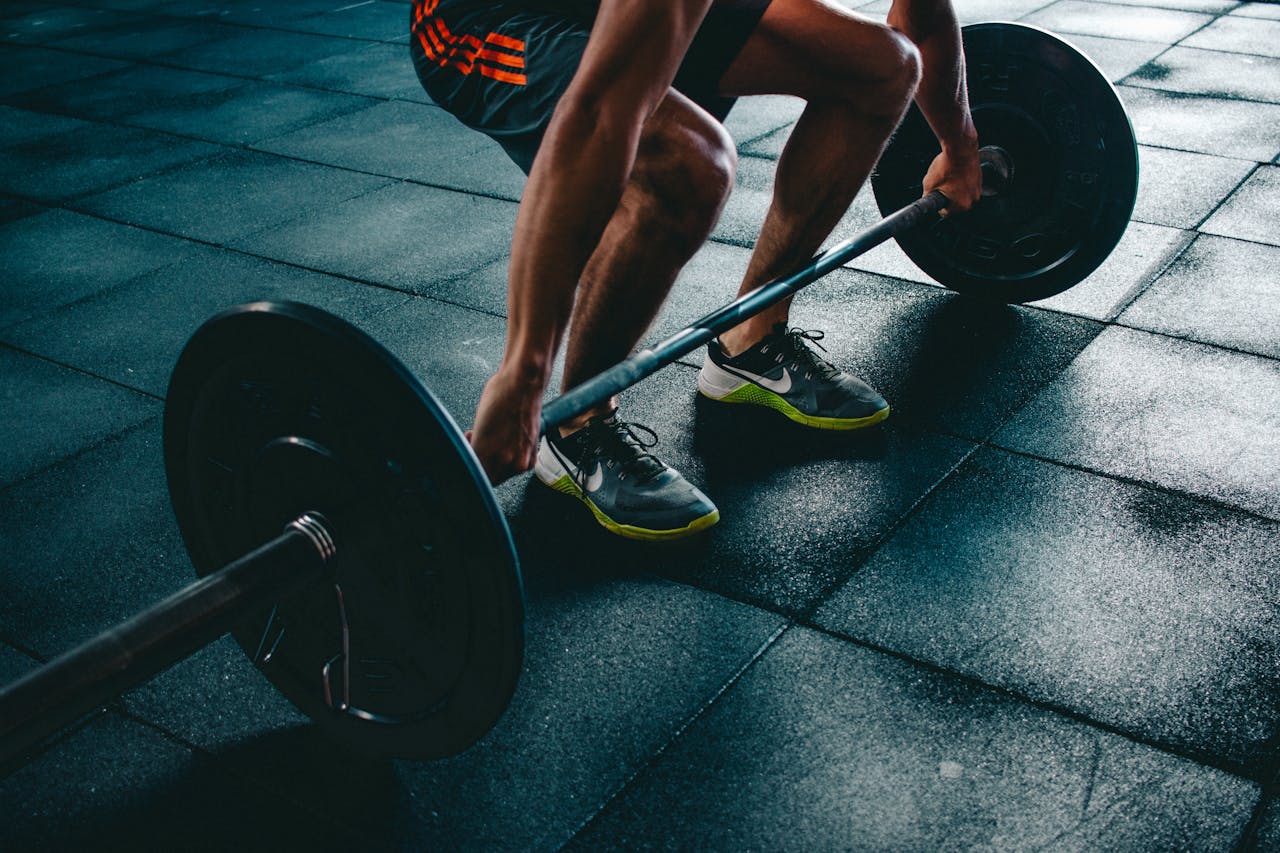
Launching on a fitness journey can be exciting and horrifying, especially if you’re new to the fitness industry so we will guide you the best workout for beginners at the gym. Whether your goal is to advance your overall health, get stronger, lose weight, just feel better, or just make yourself appealing, the gym offers a wide variety of equipment and products that help you achieve your desired fitness goals while knowing where to start can make all the difference setting the right tone for your journey. At fit24vibes we will assist you through your best exercises for beginners at the gym, helping you build a solid or rigid foundation and gain confidence in your new routine
Understanding the Gym Environment
Walking into a gym for the first time can be overwhelming, with an excess of machines, free weights, and fitness enthusiasts all around which of you are unknown and few of them your friends. It’s important to remember that everyone started from somewhere, and many gym-goers are focused on their own workout routines rather than watching others. To ease your changeover, take a moment to familiarize yourself with the layout of the gym and the different types of equipment available at the gym. Most gyms offer orientation sessions or personal training consultations to help you understand how to use the equipment safely and effectively, which we will access further in fit24vibes for the best workouts for beginners at the gym.
The Importance of a Structured Plan
A clear plan is important to get the most out of your workouts, especially when you’re just starting out. The best workouts for beginners at the gym should include cardio, strength training, and balanced flexibility exercises, which you will get information in this post. This structured plan will ensure that you not only burn calories but also build muscle to improve your overall fitness. A structured plan helps to prevent injuries and keeps you motivated by providing variety in your workouts.
“In conclusion, the gym offers a wonderful opportunity to start with a fitness journey designed for beginners. By focusing on a balanced routine that includes cardio, strength training, and flexibility exercises, you can build a strong foundation for a healthy lifestyle. Embrace the process, be patient, be consistent, and enjoy the progress. I hope you will start your Exciting Training!
How beginners should choose the right equipment at the gym?
Choosing the proper equipment at the gym may be a piece overwhelming for novices, however, starting on the proper foot is essential for safety and effective workouts. Here are some tips to help you pick out the proper equipment at the gym for beginners:
1. Understanding your goals
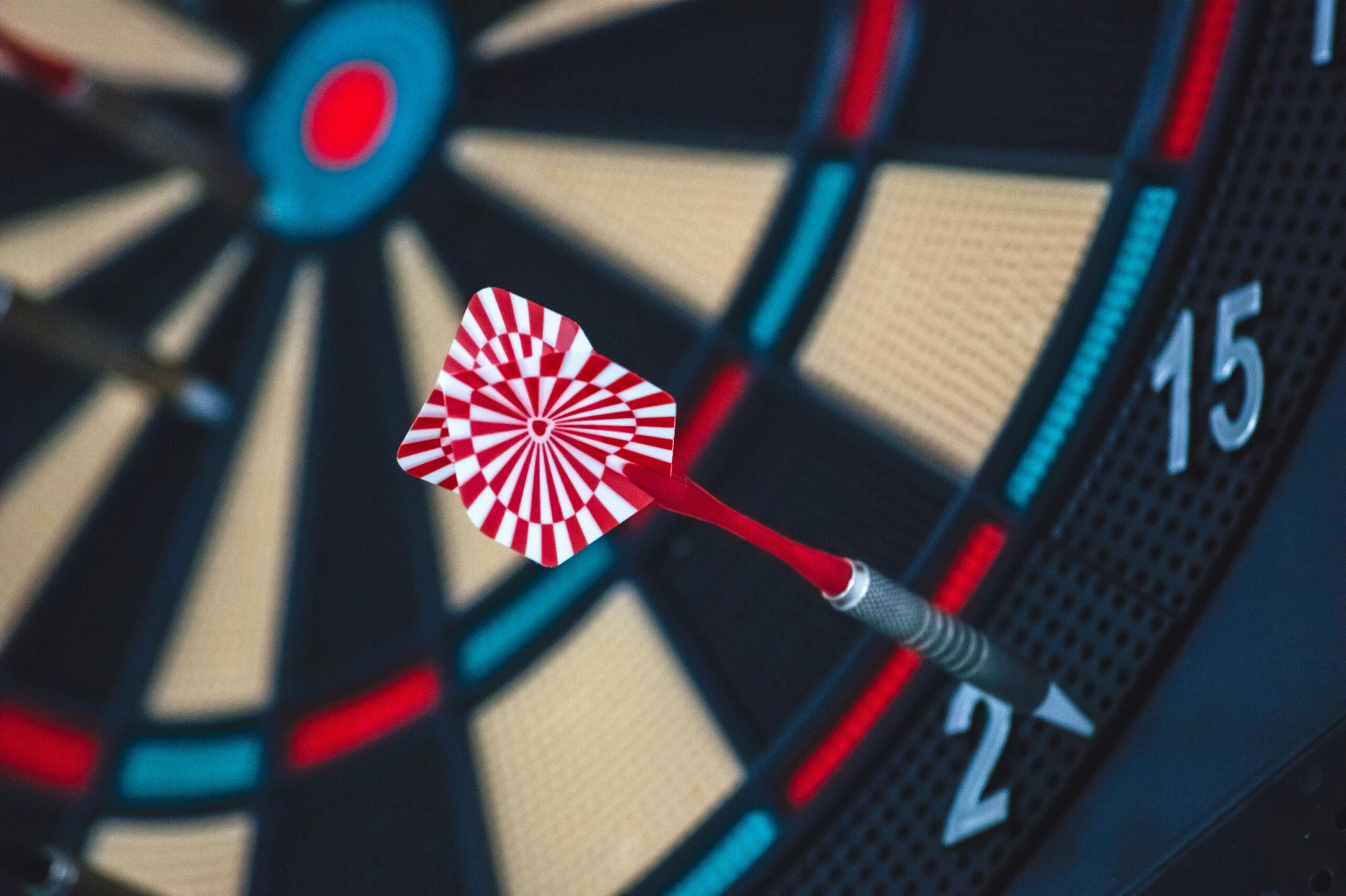
- Weight loss: For beginners if you have started the fitness journey to lose weight then focus on cardio equipment like treadmills, or stationary bikes which will help you to burn calories.
- Muscle building: If you want to build muscle mass focus on strength training with dumbbells, barbells, and weight machines.
- Overall fitness: Combine both cardio and strength training for a balanced approach. Perform each strength exercise for 45 to 60 seconds immediately followed by 30 seconds of cardio.
2. Start with the Basics

- Cardio Equipment: Treadmills, stationary bikes, and rowing machines are easy to use and provide a good introduction to cardio workouts for beginners.
- Strength Equipment: Begin with machines, as they guide your movements and reduce the risk of injury. Machines like the leg press, chest press, bench press, and lat pulldown are good starting equipment for beginners to build strength.
- Free Weights: Once you’re comfortable, engage with dumbbells and barbells for a greater range of motion and more dynamic or extensive workouts
3. Learn Proper Form
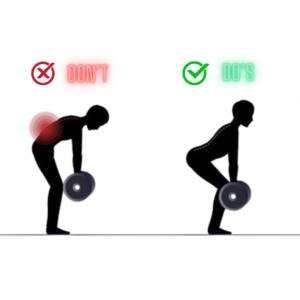
- Always prioritize learning the correct form of each exercise to prevent injuries. Many gyms offer introductory sessions with a personal trainer, which can be invaluable for beginners to learn better form to perform.
4. Hygiene and Safety

- Wipe down equipment before and after use, be mindful of gym etiquette, and keep the equipment in its organized place after usage which can prevent injuries and safety.
- Be hydrated before and after workout to recover the sweat loss and dehydration.
- Always warm up before starting your workout and cool down afterward.
- Use safety equipment like wrist band and waist belt if your performing heavy workout i.e, deadlift to prevent for major injuries.
5. Seek Professional Guidance
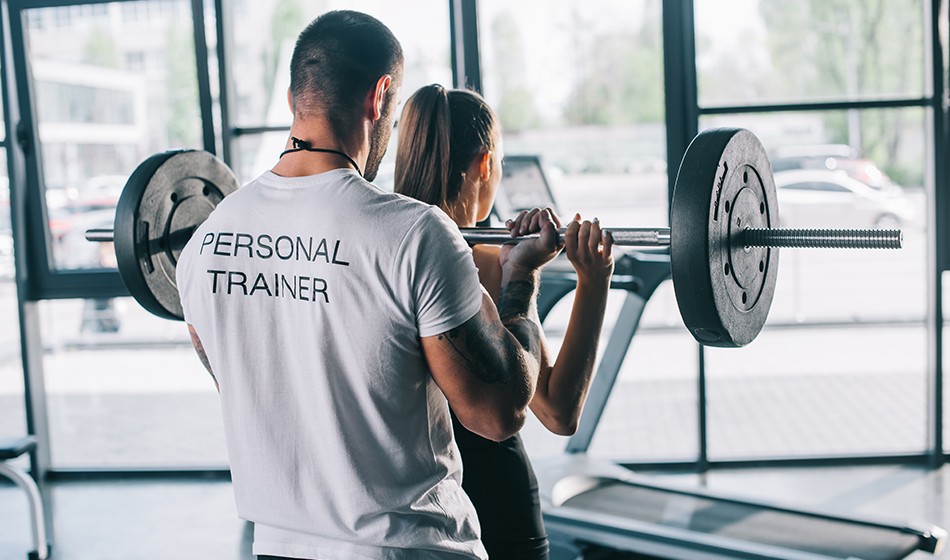
- If you’re still unsure about choosing proper equipment for workouts, consider investing in a few sessions with a personal trainer. They can tailor a program to your goals and ensure you’re using equipment correctly.
- You can hire personal trainer who will guide you a best workout plan as per your fitness level. Take support help if you are performing any workout to avoid major risk
- Take nutrition guide from professional which will help you from recovery of muscles.
6. Explore and Experiment

- Don’t be afraid to try different types of equipment and exercises after guidance. This can make your workouts interesting and help you find what you enjoy most.
- The more you are going to explore and make experiment you are going to know your true strength
A Common Guide to Gym Equipment and Free Weights
Starting your health journey at the gym can be both interesting and a touch intimidating. With such a lot of machines and weights to pick from, it’s clear to sense crushed. But don’t worry! At fit24vibes, we will introduce you to common gym equipment and explain its uses, as well as which muscle groups it targets. With this guidance, you’ll have a strong understanding of gym equipment and you can make the best workout routines for yourself as a beginner.
1. TREADMILL
A treadmill is an automated machine on foot or jogging device that lets you exercise interior, no matter weather conditions. It consists of a belt that rotates at a managed pace set by yourself, simulating the revel in of strolling or running outdoors.
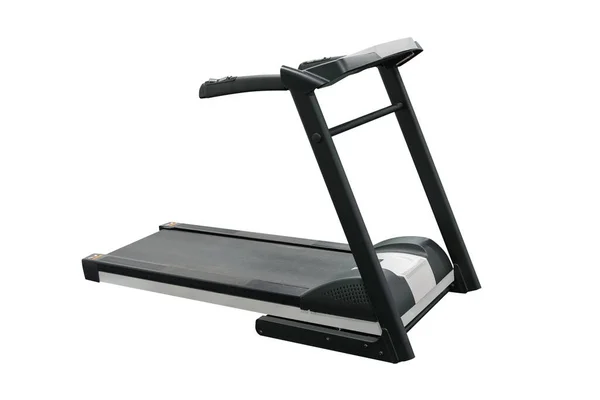
How to Use a Treadmill
Using a treadmill is relatively easy. Here’s a primary guide:
- Warm-up: Begin with a light stroll for 5-10 mins to put together your frame for exercise.
- Set the Speed: Choose a desired speed based totally on your fitness level. Start slow and regularly increase the rate as you get more fit.
- Maintain Good Posture: Stand tall, look straight ahead, and engage your core muscle tissues.
- Arm Movement: Swing your hands naturally as you stroll or run.
- Cool-down: Finish your exercise within a 5-minute walk at a sluggish pace to permit your body to gradually cool down.
Muscle Groups Targeted
While primarily a cardiovascular workout, treadmill exercise also engages several muscle groups:
- Lower Body:
- Quadriceps: The large muscle front of the thigh.
- Hamstrings: The tendon(strong bands of tissue) back of the thigh.
- Calves: The muscles back in your lower legs.
- Glutes: The muscles in your buttocks.
- Upper Body:
- Shoulders
- Arms
- Core
2. STATIONERY BIKE
A stationary bike, often referred to as a spin motorbike, is an indoor exercise machine designed to mimic the enjoyment of outside cycling. It consists of a motorcycle frame, handlebars, pedals, a resistance mechanism, and a display console. Unlike common exercise bikes, spin motorcycles are built for excessive-intensity workouts and provide more resistance and stability.
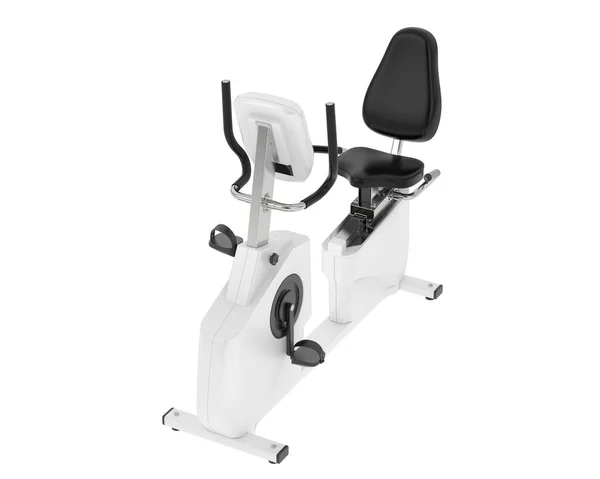
How to Use a Stationary Bike
Using a stationary motorbike is surprisingly easy:
- Adjust the Seat and Handlebars: Ensure the seat top is adjusted so that your knee is barely bent when your foot is at the bottom of the pedal stroke. The handlebars should be located without problems from your reach.
- Warm-up: Begin with a low resistance and mild pace for about 5 minutes to heat your muscles.
- Increase Intensity: Gradually increase the intensity and pedal velocity to progress yourself. You can contain periods of high-depth bursts observed by healing periods.
- Cool-down: Finish your exercising with a low resistance and gradual pace for a few minutes to permit your body to cool down.
- Stretching: After dismounting, stretch your legs, hands, and lower back to improve flexibility and reduce muscle soreness.
Muscle Groups Targeted
Stationary bike workouts primarily target the lower body muscles, including:
- Quadriceps: The muscles on the front of your thighs.
- Hamstrings: The muscles at the back of your thighs.
- Calves: The muscles in your lower legs.
- Glutes: The muscles in your buttocks.
3. ROWING MACHINE
A rowing machine, often referred to as an ergometer, is a health equipment designed to simulate the motion of rowing a ship. It provides a comprehensive exercise that engages more than one muscle group, making it a tremendous choice for beginners in search of whole-body exercises.

How to Use a Rowing Machine
Using a rowing machine requires a coordinated motion that engages your whole body. Here’s a simple usage of the rowing machine:
- Catch: Sit straight along with your legs extended, lower back directly, and whole palms achieving the handle forward.
- Drive: Engage your legs by way of pushing your lower back powerfully, observed by a controlled lower back as you lean slightly backward.
- Finish: Continue the movement by pulling the handle direction towards your chest along with your arms, at the same time as preserving your whole core engaged.
- Recovery: Return to the beginning function by extending your arms and legs in a controlled manner.
Muscle Groups Targeted
The rowing machine is an amazing tool for building overall strength and endurance. It primarily targets the following muscle groups:
- Legs: Quadriceps, hamstrings, calves
- Back: Latissimus dorsi, rhomboids, trapezius
- Core: Abs, obliques
- Arms: Biceps, triceps
4. LAT PULLDOWN MACHINE
The lat pulldown system is a well-known gym machine designed to target the back muscles, mainly the latissimus dorsi (lats). It is the best workout for the back and for beginners who want wider back muscles. It includes a vertical upright body with a horizontal bar attached to weighted pulleys. Users sit on a padded seat, hold close the bar with a full grip, and pull it down toward their chest, engaging the back muscles.

How to Use a Lat Pulldown Machine
Proper Form:
- Adjust the seat height to make certain your knees are comfortably bent at a ninety-degree angle.
- Grasp the bar with an extensive, overhand grip.
- Maintain a proper straight back and interact with your core muscles for the duration of the workout.
Execution:
- Starting Position: Sit straight with your shoulders relaxed and chest barely lifted.
- Pulldown: Exhale as you pull down the bar in a clean, controlled movement toward your top chest. Retract your shoulder blades and squeeze your back muscles at the bottom of the movement.
- Return: Inhale as you slowly return the bar to the starting point, extending your arms completely but without locking your elbows.
TIPS:
- Focus on the use of your lower back muscles to perform the movement, instead of counting on momentum.
- Avoid shrugging your shoulders throughout the pulldown.
- Experiment with different grip widths to target different back muscle areas.
Muscle Groups Targeted
The lat pulldown primarily targets the latissimus dorsi, but it also engages several other muscle groups, including:
- Primary Muscle: Latissimus dorsi (lats)
- Secondary Muscles: Biceps, rear deltoids, trapezius, and core muscles
Note : To maximize the effectiveness of the lat pulldown, incorporate it into a well-rounded back workout routine that includes exercises like pull-ups, rows, and deadlifts.
5. LEG PRESS MACHINE
The leg press machine is a weight training equipment designed to target the muscles of your lower body. It simulates the action of pressing a heavy object away from you whilst seated. The equipment offers a safe and powerful manner to build strength and muscle mass in your legs. It is the best workout machine for beginners who have skinny legs.

How to Use a Leg Press Machine
- Adjust the seat: Ensure the seat is heighted correctly to support your back and offer a comfortable angle in your legs.
- Load the weights: Select an appropriate weight for your fitness level. Start light and step by step increase the weight as you get stronger.
- Foot placement: Position your toes on the platform, shoulder-width apart. The better you position your feet, the greater emphasis may be on your quads. The lower you place them, the more emphasis may be on your glutes and hamstrings.
- Lower the weight: Slowly decrease the weight until your knees are at a 90-degree position.
- Press up: Exhale and forcefully push the weight back to the starting position.
Tips:
- Maintain a good core all through the exercise.
- Avoid locking your knees at the top of the movement.
- Keep your back straight towards the seat.
- For more challenges, pause at the bottom of the motion.
Muscle Groups Targeted
The leg press machine primarily works for the following muscle groups:
- Quadriceps: The front of your thighs.
- Hamstrings: The back of your thighs.
- Glutes: Your buttocks.
- Calves: The muscles in your lower legs.
Note : The specific muscles activated can vary depending on foot placement and the angle of your legs.
6. DUMBBELLS
Dumbbells are handheld weights commonly such as a short bar with weights attached to every end. They are available in various weights, shapes, and materials. It is a common equipment in every gym and versatile for all body parts workout. For beginners who are unable to visit the gym due to tight schedules or lack of funds, they can equip these products and can start a best full body home workout plan.
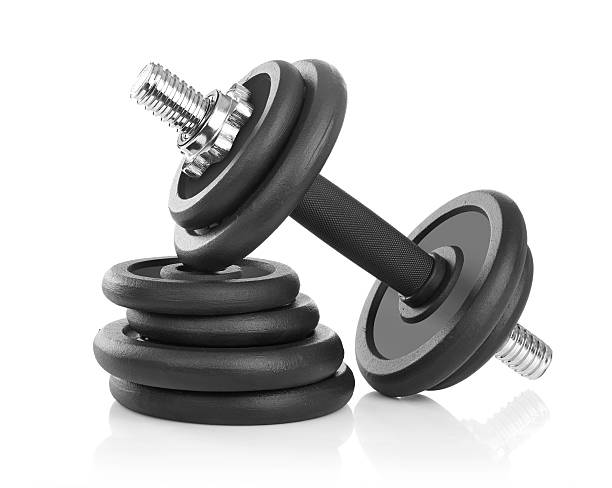
How to Use Dumbbells
Dumbbells offer versatility in workout. Here are some simple actions:
- Bicep curls: Target your biceps.
- Tricep extensions: Focus on your triceps.
- Shoulder press: Works your shoulders and triceps.
- Lunges: Engage your legs, center, and balance.
- Rows: Strengthens your back muscles.
- Chest press: Targets your chest muscle groups.
Muscle Groups Targeted
Dumbbells can effectively target all major muscle groups, including:
- Arms: Biceps, triceps, and forearms.
- Shoulders: Deltoids.
- Chest: Pectoral muscles.
- Back: Latissimus dorsi, trapezius, and rhomboids.
- Legs: Quadriceps, hamstrings, and glutes.
- Core: Obliques and rectus abdominis.
7. BARBELLS
A barbell is an extended, metal rod with weights loaded to each end. These weights, commonly called plates, can be added or removed to regulate the overall weight of the barbell. It’s a versatile piece of equipment utilized in weightlifting and strength training exercises.
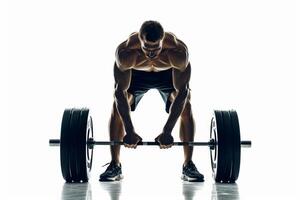
How to Use a Barbell
Barbells may be utilized in endless exercises engaging various muscle organizations. Here are a few simple guidelines:
- Grip: The grip on the barbell depends on the workout. Common grips consist of overhand, underhand, and mixed.
- Form: Proper shape is critical to prevent accidents and maximize progress. Focus on maintaining a straight backbone and engaging the core muscles at some point in lifts.
- Progression: Gradually grow the load as you get stronger to keep difficulties on your muscles.
Muscle Groups Targeted
Barbells are incredibly effective for building overall strength and muscle mass. Some of the primary muscle groups targeted with barbell exercises include:
- Chest: Bench press, incline press, decline press
- Back: Deadlifts, rows, pull-ups (with added weight)
- Shoulders: Overhead press, lateral raises, front raises
- Arms: Bicep curls, tricep extensions
- Legs: Squats, lunges, barbell hip thrusts
- Core: Barbell rollouts, planks with barbell
8. KETTLEBELL
A kettlebell is a cast metal object, similar to a cannonball with a handle. It is a versatile piece of equipment that can be used for a wide variety of exercises, it is best equipment for beginners who want to build strength along with endurance. Kettlebell workouts are good to burn calories and shed your weight. Unlike dumbbells, the kettlebell has a different weight distribution, making it a unique piece of equipment to challenge your body in new ways.
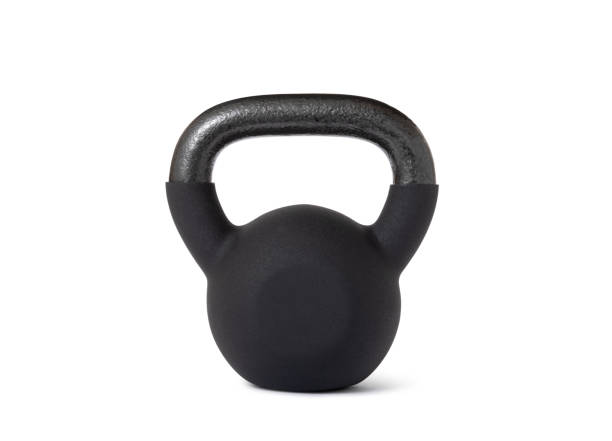
How to Use a Kettlebell
Kettlebells may be used for a variety of physical activities, making them suitable for humans of all fitness levels. Here are a few simple moves to get you commenced:
- Swings: A dynamic exercise that engages your center, hips, and shoulders.
- Turkish Get-Up: A full-body workout that improves strength, stability, and coordination.
- Goblet Squat: A squat variation that emphasizes proper form and engages your core.
- Kettlebell Rows: An extremely good workout for constructing upper back muscle strength.
- Kettlebell Presses: A hard workout that targets your shoulders and triceps.
Muscle Groups Targeted
Kettlebell workouts are effective for targeting a wide range of muscle groups, including:
- Core: Kettlebell exercises engage your core muscles deeply, improving stability and balance.
- Lower Body: Exercises like swings and squats strengthen your legs, glutes, and hips.
- Upper Body: Kettlebell rows, presses, and other upper body movements build strength and definition in your arms, shoulders, and back.
9. SMITH MACHINE
A Smith Machine is a weightlifting equipment that courses the barbell along vertical and horizontal tracks. Unlike free weights, which require significant balance and coordination, the Smith Machine gives a fixed path, making it less complicated for beginners or those who are recovering from injuries to carry out physical activities which reduces the risk of injuries. However, it’s crucial to note that at the same time as it can be a valuable equipment, it doesn’t fully reproduce the challenges and benefits of free weight exercises.
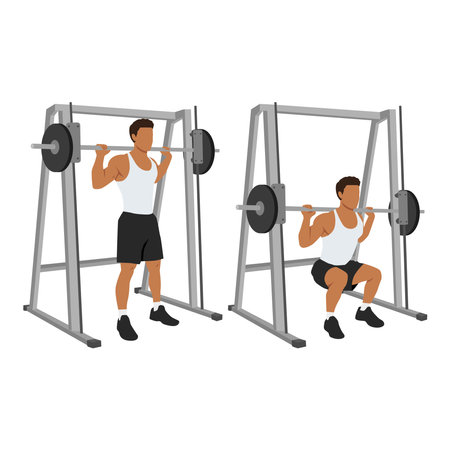
How to Use a Smith Machine
While the barbell’s fixed path facilitates movement, the fit is still important. Here are some basic guidelines:
- Adjust the height: Make sure the bar is at the right height for your starting position.
- Weights: Put weight plates in the bar according to your strength.
- Maintain good posture: Stand with your feet shoulder-width apart and engage your core.
- Control movement: Avoid heavy bumps or vibrations in weights. Reduce your weight slowly and control movement.
Muscle Groups Targeted
The Smith Machine is versatile and can target a wide range of muscle groups, including:
- Chest: Bench press, incline press, decline press
- Back: Bent-over rows, pull-ups (with Smith Machine attachment)
- Shoulders: Shoulder press, lateral raises
- Legs: Squats, lunges, hamstring curls
- Arms: Bicep curls, triceps extensions
WORKOUT ROUTINE FOR BEGINNERS
Creating a best workout for beginner at the gym is a great way to build strength, improve cardiovascular health, and increase right workout habits. At fit24vibes, here’s a advised weekly routine that includes a mixture of weight machines, free weights, and cardio exercises. Remember to start with light weights and focus on proper form to save you from injuries.
Weekly Workout Routine for Beginners
Day 1: Full Body Workout
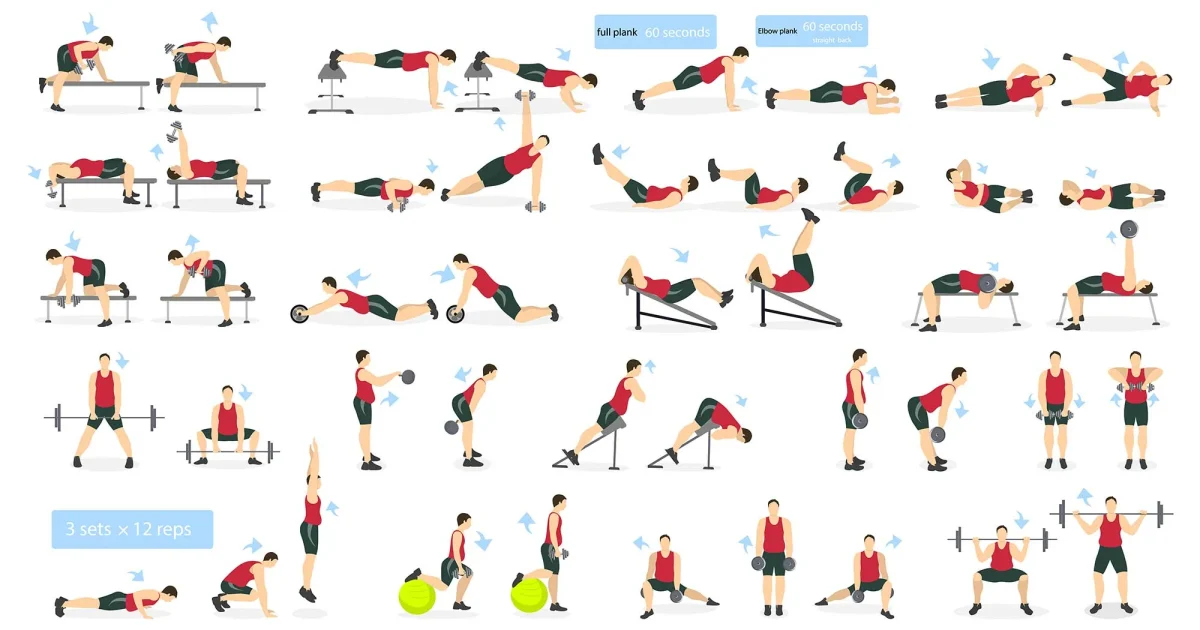
1. Warm-up:
- Start with 5-10 minutes of light cardio (e.g., treadmill, stationary bike)
2. Exercises:
- Leg Press: 2 sets of 10-12 reps
- Lat Pulldown: 3 sets of 10-12 reps
- Chest Press Machine: 3 sets of 10-12 reps
- Seated Row Machine: 2 sets of 10-12 reps
- Dumbbell Shoulder Press: 3 sets of 10-12 reps
- Dumbbell Curls: 3 sets of 10-12 reps
- Tricep Pushdown: 3 sets of 10-12 reps
- Plank: 3 sets of 20-30 seconds
3. Cool-down:
After workout, you must do 5-10 minutes of stretching as it eliminate the lactic acid that accumulates throughout the body and helps to relax tense muscles.
Day 2: Cardio and Core
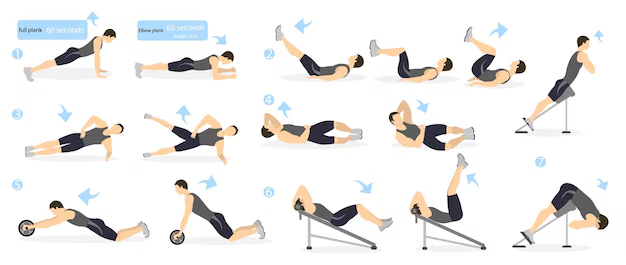
1. Warm-up:
- Start with 5-10 minutes of light cardio (e.g., treadmill, stationary bike)
2. Cardio:
- 30-40 minutes of moderate-intensity cardio (e.g., treadmill, elliptical, cycling)
- Jumping Squat: 3 sets of 10-15 reps
- Side Lunge(Bodyweight): 3 sets of 10-15 reps
- Jumping Jacks: 3 sets of 10-12 reps
3. Core Exercises:
- Crunches: 2 sets of 15-20 reps with 30 secs rest between sets
- Leg Raises: 2 sets of 10-15 reps with 30 secs rest between sets
- Russian Twists: 2 sets of 15 reps per side with 30 secs rest between sets
- Mountain Climbers: 2 sets of 30 secs with 30 secs rest between sets
- V-sit Crunch: 2 sets of 30 secs with 60 secs rest between sets
- Flutter Kicks: 2 sets of 30 secs with 30 secs rest between sets
- Plank: 1 set with maximum hold capacity as per your body level
4. Cool-down:
After workout , you must do 5-10 minutes of stretching as it eliminate the lactic acid that accumulates throughout the body and helps to relax tense muscles.
Day 3: Upper Body

1. Warm-up:
- Start with 5-10 minutes of light cardio (e.g., treadmill, stationary bike)
2. Exercises:
- Bench Press (Barbell or Dumbbells): 3 sets of 10-12 reps
- Push-Ups(with weight or without weight): 3 sets of 10-15 reps
- Dumbbell Rows: 3 sets of 10-12 reps per arm
- Lateral Raises: 3 sets of 12-15 reps
- Shoulder Press(Dumbbells): 3 sets of 10-12 reps
- Triceps Pushdown (Cable Machine): 3 sets of 10-12 reps
- Bicep Curls (Dumbbells or Cable Machine): 3 sets of 10-12 reps
- Hammer Curls(Dumbbells): 3 sets of 10-12 reps
3. Cool-down:
After workout, you must do 5-10 minutes of stretching as it eliminate the lactic acid that accumulates throughout the body and helps to relax tense muscles.
Day 4: Rest or Active Recovery
Active Recovery: Light activities such as walking, jogging, yoga, or stretching.
Day 5: Lower Body

1. Warm-up:
- Start with 5-10 minutes of light cardio (e.g., treadmill, stationary bike)
2. Exercises:
- Squats (Bodyweight or Barbell): 3 sets of 10-12 reps
- Lunge(Dumbbell): 3 sets of 10-12 reps
- Bulgarian Split Squat(weight plate): 2 sets of 10-12 reps for each leg
- Leg Curl Machine: 3 sets of 10-12 reps
- Leg Extension Machine: 3 sets of 10-12 reps
- Calf Raises: 3 sets of 15-20 reps
- Glute Bridge: 3 sets of 12-15 reps
3. Cool-down:
After workout, you must do 5-10 minutes of stretching as it eliminate the lactic acid that accumulates throughout the body and helps to relax tense muscles.
Day 6: Cardio and Flexibility
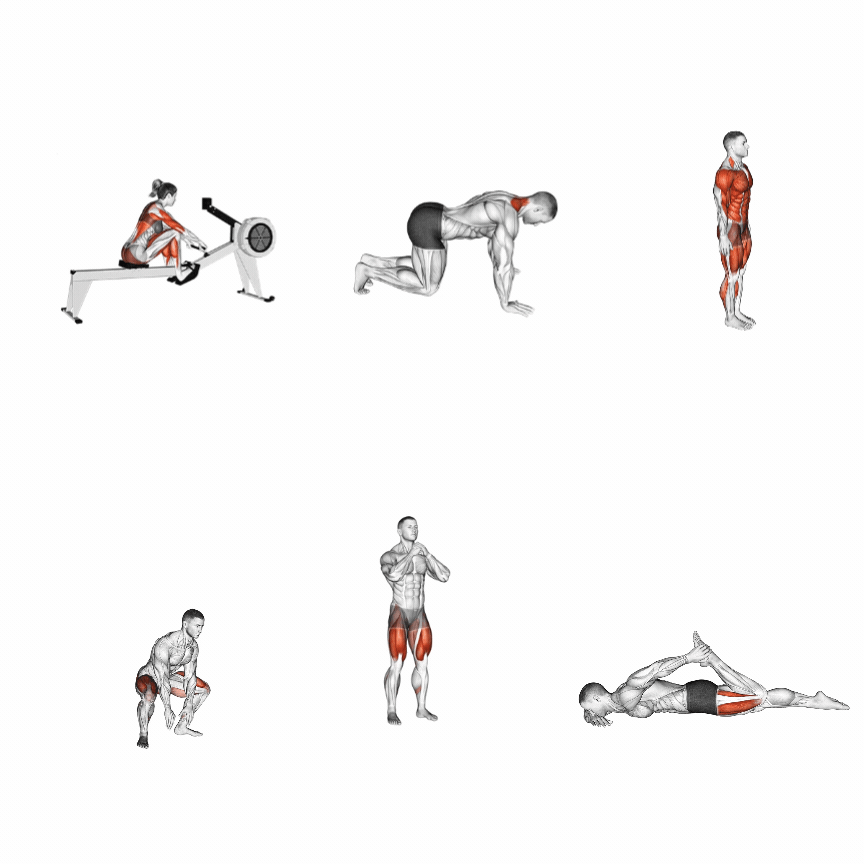
1. Warm-up:
- Start with 5-10 minutes of light cardio (e.g., treadmill, stationary bike)
2. Cardio:
- 30-40 minutes of moderate-intensity cardio (e.g., rowing machine, cycling, running)
- Jumping Squat(Bodyweight): 3 sets of 10-15 reps
- Side Lunge(Bodyweight): 3 sets of 10-15 reps
- Jumping Jacks: 3 sets of 10-12 reps
3. Flexibility:
15-20 minutes of stretching or yoga
Day 7: Rest
Rest: Allow your body to recover and rejuvenate.
Tips:
- Listen to Your Body: If you feel pain (not to be confused with muscle soreness), stop the exercise and consult a professional. It is important tips for beginners if there is pain in muscles after a day take rest to get your muscles recovery to lift out the ego as it can dangerous for you.
- Hydrate: Drink plenty of water before, during, and after workouts which will keep you hydrated and from soreness.
- Nutrition: For beginners, doing extensive exercises or workouts does not build up the muscles as it is only 50% the rest comes by maintaining a balanced diet which will give the nutrition value to build the muscles and taking enough rest to give recovery to muscles.
- Consistency: Stick to the routine and gradually increase the intensity as you get stronger. If you had made your mind for this fitness journey you have to fulfil until you achieve your goals so being consistence and discipline towards it.
Share this post: on Twitter on Facebook
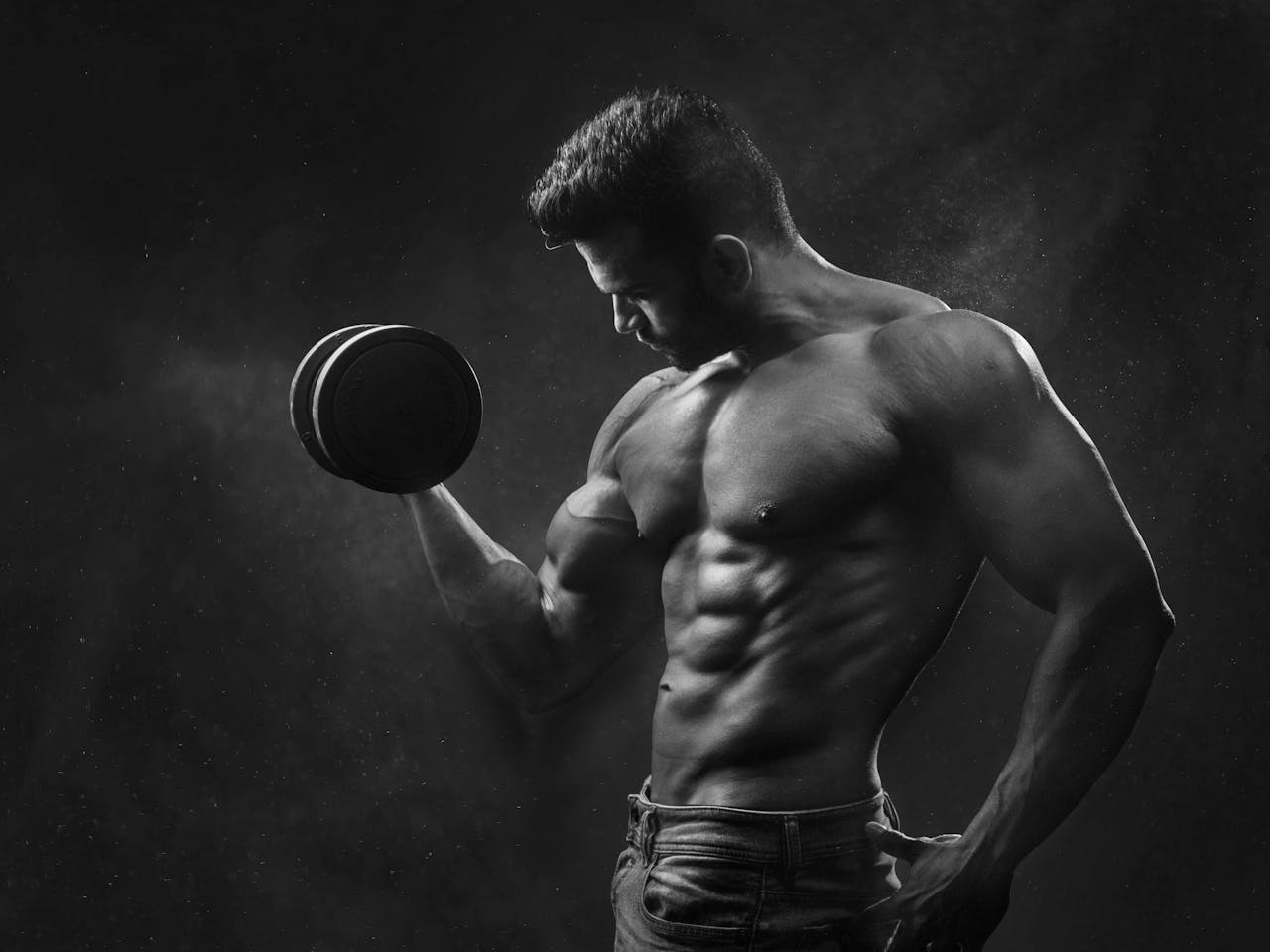
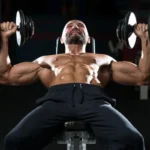
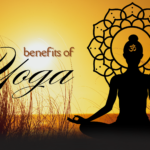



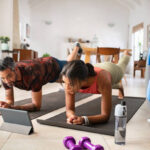
Thanks for your help and for writing this post. It’s been great.